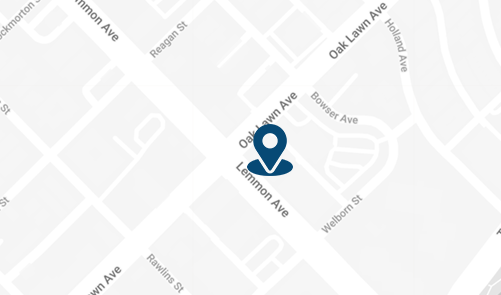By: Dr. Dev Batra | 01.30.23
Compression stockings have been a standard treatment for varicose veins for many decades, and are still prescribed today as a first-line therapy to manage symptoms and prevent the progression of chronic venous insufficiency (CVI).
While compression stockings can provide effective symptom relief for some, many patients find them uncomfortable and have a hard time staying compliant with their treatment plan. Even when patients strictly adhere to their compression therapy, stockings are unlikely to be a curative treatment for vein disease. These limitations can lead physicians to believe that they’re effectively managing their patients’ vein problems with a simple compression therapy prescription when in reality, vein disease may be progressing as it would without any prescription at all.
To help explain the role of compression therapy versus more effective vein treatments, we take a look at why compression stockings are prescribed, their limitations, and what the clinical evidence has taught us about their efficacy.
In this Article
-
How compression stockings may help manage varicose veins
-
The challenges and limitations of compression stockings for varicose veins
-
The comparative data between compression stockings and curative vein treatments

How Compression Stockings Work
In a healthy vein, tiny valves along the course of the vein open and close to prevent backflow. As a person ages, the veins are subjected to stresses that can cause the valves to weaken and stop working, causing blood to flow backwards and pool in the veins. This phenomenon is called venous reflux and leads to a variety of symptoms like bulging varicose veins, spider veins, swelling, and cramping.
Compression stockings work by applying external pressure on the veins. This external pressure is meant to ease blood flow through the veins by creating a more favorable pressure gradient across the vein.¹ This mode of action may alleviate symptoms and may prevent further worsening of vein disease.²
Compliance with Compression Stockings Can Be Challenging
Compression stockings are only effective while they are worn. Because swelling increases when sitting or walking, stockings must be worn throughout the entire day to have maximum benefit. Most physicians recommend wearing them throughout the day and only taking them off at night before sleeping. Care must be taken to not get them wet, and any open sores or ulcers that may be present on the legs must be cleaned and bandaged before putting on the stockings.
Many patients find that keeping up with compression therapy for varicose veins is difficult. A literature review published by the European Society of Vascular Surgery in 2017 found that patient compliance with compression stockings was only 66%, and patients were more likely to be compliant when prescribed lower degrees of compression. ³ The investigators of this review cited a number of reasons why patients have a hard time keeping up with compression therapy. Challenges include:
-
Forgetting to wear stockings
-
Difficulty putting stockings on
-
Dissatisfaction with stocking appearance
-
Discomfort wearing stockings on warm days
Another study found that compression stockings can cause a number of uncomfortable side effects,² including:
-
Itchiness
-
Numbness in the legs
-
Sweating
-
Pain related to stocking use
-
Skin breakdown if the stockings are too tight
-
Fungal infections if the skin is not cleaned properly or if an open wound is present
-
Contact dermatitis if allergic to stocking material
Compression Stockings Do Not Cure Vein Disease
Studies examining both compression stocking therapy and venous surgery have demonstrated the differences in efficacy between passive management (compression) and proactive vein treatment (surgery). One such study done over two years in Finland showed that patients who underwent surgery had a significant reduction in symptoms and improvement in quality of life measures such as itching, appearance, ability to perform daily activities and swelling. And of the patients who underwent compression therapy alone, 36% of patients had opted to undergo vein surgery after the trial ended.⁴
Another way to look at the long-term effects of compression therapy is to examine their effect on venous stasis ulceration, the ‘end-stage’ complication of vein disease. One such randomized controlled trial published by The Lancet in 2004 compared compression stockings alone versus surgery and compression stockings. This trial, popularly called the ESCHAR trial, found no difference between the two therapies for ulcer healing within 24 weeks. However, patients who had gone through both superficial venous surgery and compression therapy had a 19-20% reduction of ulcer recurrence compared to compression therapy alone.⁵
While these studies looked at surgical vein treatment compared to compression stockings, these findings certainly apply to minimally invasive treatments like thermal vein ablation, VenaSeal, and ultrasound-guided foam sclerotherapy as well.⁶

Conclusion: Are Compression Stockings Effective in the Treatment of Varicose Veins?
Compression stockings may provide symptom relief and help prevent vein disease from worsening, but they require continuous use to be effective and do not address the underlying source of vein disease. Clinical studies have demonstrated that more proactive vein treatments are more effective than simple compression therapy. Taken together, these facts point to compression therapy as a very conservative treatment approach with a high likelihood of failure. And while the risks of compression therapy are minimal, the real risk is that effective vein treatment is delayed when we rely too heavily on compression stockings to provide effective long-term vein disease management.
At the Texas Vascular Institute, we tend to say that vein problems are very common and very treatable. Minimally invasive treatments like thermal vein ablation are more than 95% effective in treating varicose veins and resolving vein-related symptoms. ⁷ If you’ve had enough of compression stockings, it may be time to see a vein specialist.
About the Author
Dr. Dev Batra, M.D. is a vein specialist and founding partner of Texas Vascular Institute. Holding board certifications in radiology and vascular & interventional radiology, he is well-versed in vein issues and has been voted one of D-Magazine’s best doctors in Dallas for three years running.
This blog post was written with research and editorial assistance from OnChart.
References
[1] Rohan, C.P-Y., Badel, P., Lun, B., Rastel, D. & Avril, S. (2013). Biomechanical response of varicose veins to elastic compression: A numerical study. Journal of Biomechanics, 46:599-603.
[2] Motykie, G.D., Caprini, J.A., Arcelus, J.I., Reyna, J.J., Overom, E. & Mokhtee, D. (1999). Evaluation of therapeutic compression stockings in the treatment of chronic venous insufficiency. Dermatol Surgery, 25:116-120.
[3] Kankam, H.K.N., Lim, C.S., Fiorentino, F., Davies, A.H. & Gohel, M.S. (2017). A summation analysis of compliance and complications of compression hosiery for patients with chronic venous disease or post-thrombotic syndrome. European Journal of Vascular and Endovascular Surgery, 55:406-416.
[4] Sell, H., Vikatmaa, P., Albäck, A., Lepäntalo, M., Malmivaara, A., Mahmoud, O. & Venermo, M. (2014) Compression therapy versus surgery in the treatment of patients with varicose veins: A RCT. European Journal of Vascular and Endovascular Surgery, 47(6):670-677.
[5] Barwell, J.R., Davies, C.E., Deacon, J., Harvey, K., Minor, J., Sassano, A., Taylor, M., Usher, J., Wakely, C., Earnshaw, J.J., Heather, B.P., Mitchell, D.C., Whyman, M.R. & Poskitt, K.R. (2004). Comparison of surgery and compression with compression alone in chronic venous ulceration (ESCHAR study): randomized controlled trial. Lancet, 363:1854-59.
[6] Lohr, J., & Kulwicki, A. (2010). Radiofrequency Ablation: Evolution of a Treatment. Seminars in Vascular Surgery, 23(2), 90–100.
[7] Morrison, N., Gibson, K., Vasquez, M., Weiss, R., Cher, D., Madsen, M., & Jones, A. (2017). VeClose trial 12-month outcomes of cyanoacrylate closure versus radiofrequency ablation for incompetent great saphenous veins. Journal of Vascular Surgery: Venous and Lymphatic Disorders, 5(3), 321–330.
Medical Disclaimer
The Materials available in the Texas Vascular Institute blog are for informational and educational purposes only and are not a substitute for the professional judgment of a healthcare professional in diagnosing and treating patients.
Read more blogs
Varicose Veins in Hurst: Expert Care at Your Doorstep
At Texas Vascular Institute (TVI), we empathize with the discomfort and worry caused by varicose veins. That's why we're here in Hurst, providing cutting-edge treatments that are customized to address your unique needs. With our team of experts wielding extensive knowledge and experience, we promise to provide the utmost care in a warm and compassionate atmosphere. Let us help you find relief and regain your confidence!
Varicose Veins in Dallas: Quality Care You Can Trust
Our exceptional team of vascular specialists are true leaders in their field, armed with years of invaluable experience. Harnessing the power of cutting-edge advancements in vein treatment, they've transformed the lives of numerous patients, liberating them from the pain and unsightly burden of varicose veins. When you choose TVI, you're opting for unparalleled care and unwavering commitment to your varicose vein needs in Dallas.
How to Get Rid of Varicose Veins in Hurst?
The causes and risk factors of varicose veins vary from genetics to age, pregnancy, obesity, and prolonged standing or sitting, among other factors. Some typical signs and possible issues include discomfort, inflammation, irritation, hemorrhage, dermatological alterations, sores, and thrombosis. You may want to seek medical attention if you experience any of the following symptoms or complications.
WHAT OUR PATIENTS
have to say
Texas Vascular Institute always appreciates feedback from our valued patients. To date, we’re thrilled to have collected 378 reviews with an average rating of 5 out of 5 stars. Please read what others are saying about Texas Vascular Institute below, and as always, we would love to collect your feedback.
Leave a Review
Amazing Practice
I'm very particular with my Healthcare and tend to be cautious with referrals to specialists. This office is amazing from the first point of contact. Their staff are friendly, professional and highly knowledgeable. Then the Dr is just as amazing as his staff, absolutely brilliant. Office manager Jessica has this office running like a well oiled machine and does so with a smile, an air of confidence, kindness and professionalism. Love this practice!!
- Richard G.

Beyond Thankful
Dr Batra and his staff are amazing! We are so grateful to have found him. Everyone is so kind and so caring and Dr Batra explains everything so well and does procedures with excellence. Beyond thankful to be under their care!!!
- Bitsy P.

Gold Standard
This is a gold standard for how a medical practice should be run. I was promptly seen at my scheduled time, my ultrasound was thorough and I received plenty of attention and care from the staff and Dr.Batra.
- Weronika L.
INSURANCE
We accept most major insurance plans. Please contact the medical office for all insurance related questions.









3500 Oak Lawn Ave, #760
Dallas, TX 75219
For Appointments: 972-798-4710
General Inquiries: 972-646-8346

809 West Harwood Rd, Suite 101,
Hurst, TX 76054
For Appointments: 972-798-4710
General Inquiries: 972-646-8346

